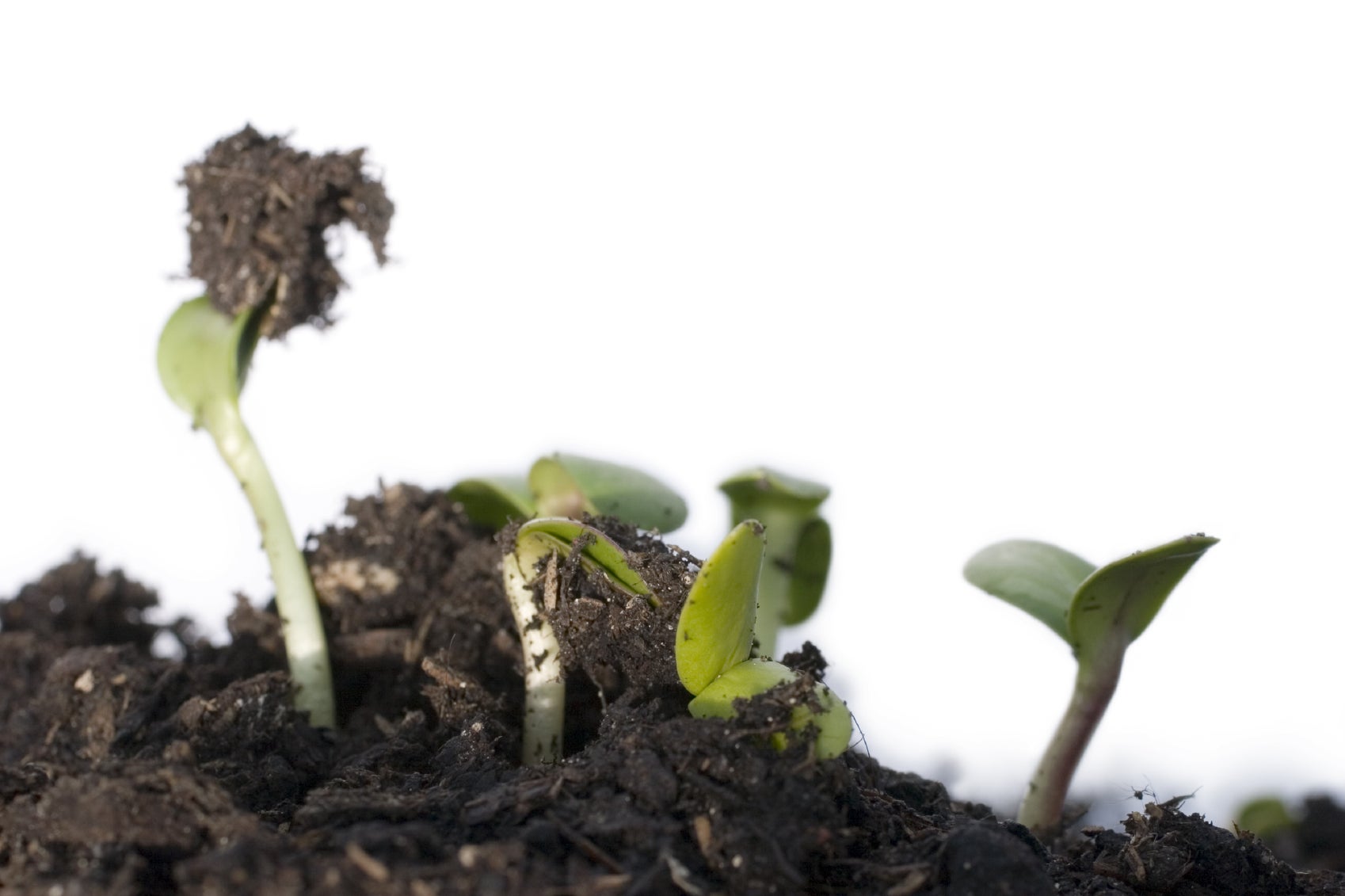Why Are Vegetables Popping Up In Compost Pile?

Seeds sprouting up in compost? I admit it. I am lazy. As a result, I often get some errant veggies or other plants popping up in my compost. While this is of no particular concern to me (I just pull them up), some folks are a bit more disquieted by this phenomenon and wonder how to prevent seeds from sprouting in their compost.
Why Are Vegetables Popping Up in Compost?
The simple answer to “why are vegetables popping up in compost” is because you are composting seeds, or rather not composting them. You either belong to the lazy group of people, such as myself, and just toss everything into your compost, or your compost is not superheating to a high enough temperature that will deter the seeds from sprouting.
How to Prevent Veggie Sprouts in Compost
Keep in mind the mechanics of the compost pile. In order to keep seeds from sprouting in the compost pile, it must maintain a temperature between 130-170 degrees F. (54-76 C.) and must continually be turned if temps drop below 100 degrees F. (37 C.). A properly heated compost pile will kill off the seeds but does require some serious vigilance and effort. Along with moisture and turning the compost pile, the proper levels of carbon and nitrogen need to be present for the pile to heat up. Carbon is produced from browns, such as dead leaves, while nitrogen is produced from green waste like grass clippings. The basic rule of thumb for a compost pile is 2-4 parts carbon to one part nitrogen to allow the pile to properly heat up. Chop up any large chunks and keep turning the pile, adding moisture as needed. Additionally, the pile should have enough space for successful composting to take place. A compost bin will work or a pile 3 feet (1 m.) square (27 cubic feet (8 m.)) should allow enough space for composting seeds and killing them off. Build the compost pile all at one time and wait until the pile drops before adding new material. Turn the pile once a week with a garden fork or a compost crank. Once the pile has composted in its entirety- the material looks like deep brown soil with no identifiable organics- allow it to sit for 2 weeks without turning before using it in the garden. If you are practicing “cool composting” (AKA “lazy composting”), which is simply piling up the detritus and letting it rot, the temperature of the pile will never get hot enough to kill seeds. Your options then are to pull the unwanted plants “ala moi” or avoid adding any seeds into the mixture. I must say that I do avoid adding certain mature weeds because I do not want those to be spread all over the yard. We also do not put any “sticker” plants into the compost pile, such as blackberries.
Can You Use Seedlings from Compost?
Well, sure. Some “volunteers” from the compost bin yield perfectly edible veggies like cukes, tomatoes, and even pumpkins. If the stray plants don't bother you, don't pull them out. Just let them grow through the season and, who knows, you may be harvesting bonus fruits or vegetables.
Gardening tips, videos, info and more delivered right to your inbox!
Sign up for the Gardening Know How newsletter today and receive a free copy of our e-book "How to Grow Delicious Tomatoes".

Amy Grant has been gardening for 30 years and writing for 15. A professional chef and caterer, Amy's area of expertise is culinary gardening.
-
 Looking For Plants To Give You The Soft And Fuzzies? Try These 5 Fuzzy Leaf Plant Options
Looking For Plants To Give You The Soft And Fuzzies? Try These 5 Fuzzy Leaf Plant OptionsLovers of texture, drama, silver foliage and tactile plants will adore these special sensory garden additions. These fuzzy leaf plant options will leave you all aglow
By Susan Albert
-
 Get Ready For A Summer Of Hummers! Grow These Full Sun Hummingbird Plants and Flowers
Get Ready For A Summer Of Hummers! Grow These Full Sun Hummingbird Plants and FlowersIf you’re lucky enough to enjoy a sunny backyard, make sure you are maxing out on your pollinator opportunities and grow these full sun hummingbird plants and flowers
By Tonya Barnett